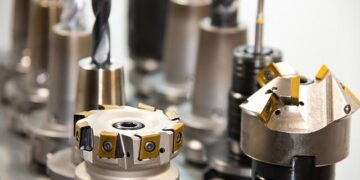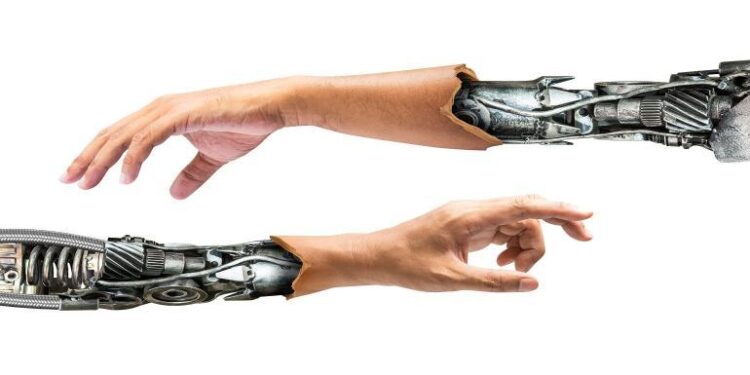In a groundbreaking series of experiments, scientists have subjected a new type of robotic skin to intense tests-burning, poking, and slicing-to prove its extraordinary sensitivity and durability. Designed to mimic the human sense of touch, this innovative synthetic skin can detect a wide range of sensations, from gentle pressure to pain, marking a significant leap forward in robotics and prosthetics. Researchers believe this advancement could transform how machines interact with their environment and pave the way for more lifelike and responsive robots.
Scientists Test Durability of Advanced Robotic Skin Under Extreme Conditions
In a groundbreaking series of experiments, researchers subjected a cutting-edge robotic skin to a gauntlet of harsh tests designed to push its limits. This innovative material, engineered to mimic human tactile sensation, was exposed to extreme heat, sharp objects, and various mechanical stresses. Scientists deliberately burned, poked, and sliced the synthetic layer to analyze its response and durability. Impressively, the advanced skin consistently demonstrated resilience, maintaining its sensor functionality even after severe physical damage, suggesting a leap forward in the development of lifelike robotics.
Key tests included:
- Thermal exposure exceeding 300°C to evaluate heat resistance.
- Repeated punctures using fine needles to measure sensitivity retention.
- Sharp blade slicing to simulate real-world mechanical threats.
| Test Type | Damage Inflicted | Post-Test Sensor Function (%) |
|---|---|---|
| Thermal Burn | Surface char and blackening | 85% |
| Needle Poke | Multiple fine perforations | 92% |
| Blade Slice | Partial cuts across layers | 78% |
Breakthroughs in Sensory Technology Allow Robots to Detect Touch, Temperature, and Pain
Researchers have developed a revolutionary type of robotic skin that mimics the complex sensory capabilities of human skin, enabling robots to perceive a variety of physical stimuli with remarkable accuracy. By subjecting the synthetic material to intense testing – including burning, poking, and slicing – scientists validated its resilience and sensitivity. This breakthrough equips robots with the ability to detect pressure, temperature changes, and even painful stimuli, a key step toward more intuitive and safer human-robot interactions.
Key innovations include the integration of flexible sensors and advanced materials that respond dynamically to environmental inputs. The technology features:
- Thermal sensors that monitor temperature fluctuations with precision
- Pressure sensors capable of distinguishing gentle touch from forceful impact
- Nociceptive elements that allow detection of harmful stimuli resembling pain
| Stimulus Type | Detection Accuracy | Response Time (ms) |
|---|---|---|
| Light Touch | 95% | 25 |
| Temperature Variation | 92% | 40 |
| Harmful Pressure | 90% | 30 |
Experts Recommend Integration of Multifunctional Robotic Skin for Enhanced Human-Machine Interaction
Cutting-edge advances in robotic skin technology have opened new avenues for seamless human-machine synergy. Researchers have now developed a revolutionary multifunctional robotic skin capable of perceiving an expansive range of tactile stimuli-heat, pressure, and even sharp impacts-mimicking the sensitivity of natural human skin. This innovation is more than a scientific marvel; experts emphasize its potential to redefine interaction paradigms across healthcare, prosthetics, and wearable robotics by providing machines with a life-like tactile awareness. The skin’s resilience and responsiveness were tested under extreme conditions including burning, poking, and slicing, proving its unmatched durability and sensitivity.
Key advantages of this next-generation robotic skin include:
- High thermal sensitivity: Detects minute temperature variations crucial for delicate tasks.
- Pressure differentiation: Recognizes varying degrees of force to enable precise control.
- Robustness: Maintains functionality after physical damage, ensuring long-term reliability.
- Multimodal sensing: Simultaneously processes diverse stimuli to enhance reaction accuracy.
| Test Type | Outcome | Significance |
|---|---|---|
| Burning | Maintained sensory function | Durability under thermal stress |
| Poking | High sensitivity even to light touch | Enhanced precision for delicate manipulation |
| Slicing | Sustained multi-layer functionality | Resilience against physical damage |
In Retrospect
As researchers continue to push the boundaries of synthetic touch, this breakthrough in robotic skin marks a significant step toward machines that can truly feel-and respond to-their environments. Withstanding burns, prods, and cuts, this resilient new material not only mimics the sensitivity of human skin but also promises wide-ranging applications, from advanced prosthetics to safer robotics. While challenges remain, the ability to engineer skin that perceives everything brings us closer to a future where robots interact with the world-and us-with unprecedented nuance and care.































